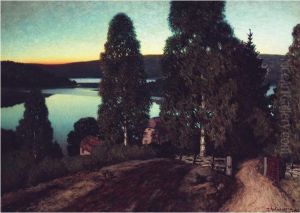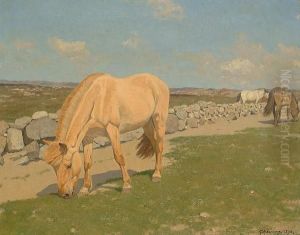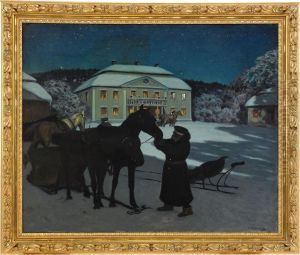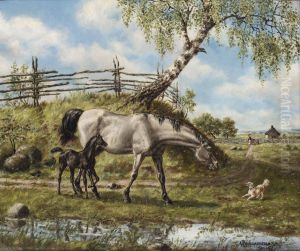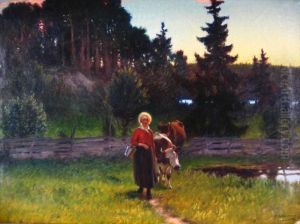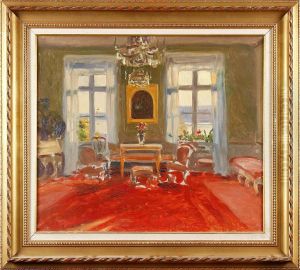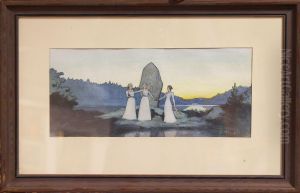Gustav Ankarcrona Paintings
Gustav Ankarcrona, full name Johan Gustaf Ankarcrona, was a notable Swedish painter and illustrator born on February 26, 1868, in Stockholm. Coming from a distinguished background, his father was a naval officer, which influenced the young Ankarcrona's early life and later his artistic themes. He initially embarked on a military career, following family tradition, but his passion for art led him to pursue a different path. Ankarcrona's artistic journey began in earnest when he decided to leave his military career behind and dedicate himself to painting. He studied art in Sweden before traveling extensively in Europe to further his education in the arts. His studies took him to prominent art capitals, including Paris and Munich, where he was exposed to various artistic styles and movements that were to influence his work significantly. Ankarcrona was particularly drawn to the naturalistic and impressionistic styles, which would later be reflected in his landscape and maritime paintings.
Throughout his career, Ankarcrona was known for his versatility as an artist. He was proficient in both oil painting and watercolor, and his subjects ranged from landscapes and maritime scenes to portraits and genre works depicting everyday life. His paintings often captured the serene and majestic beauty of the Scandinavian landscape, reflecting his deep appreciation for nature. Ankarcrona's maritime paintings, in particular, are notable for their detailed representation of ships and the sea, a likely homage to his naval heritage. These works garnered him considerable acclaim during his lifetime and remain among his most celebrated contributions to Swedish art.
Ankarcrona's talent was recognized by his contemporaries, and he became a member of various art societies, including the Royal Swedish Academy of Arts. Despite his relatively short life, his work had a significant impact on Swedish art, and he is remembered for his contribution to the National Romantic movement, which sought to capture the spirit and beauty of the Swedish landscape and cultural heritage. Gustav Ankarcrona's life was cut short when he passed away on December 10, 1913, in Stockholm. His legacy, however, lives on through his art, which continues to be appreciated for its beauty and historical value. Ankarcrona's works are held in several Swedish museums, where they continue to attract admirers and scholars interested in the evolution of Swedish painting and the National Romantic movement.
